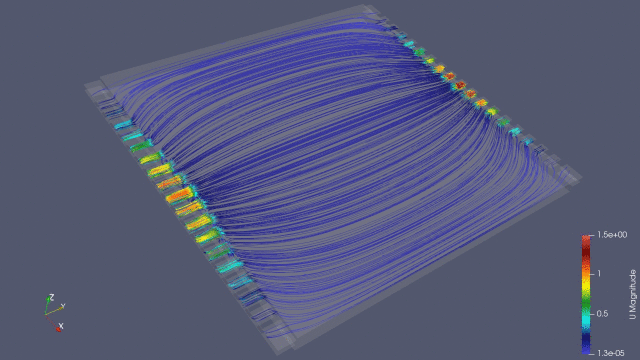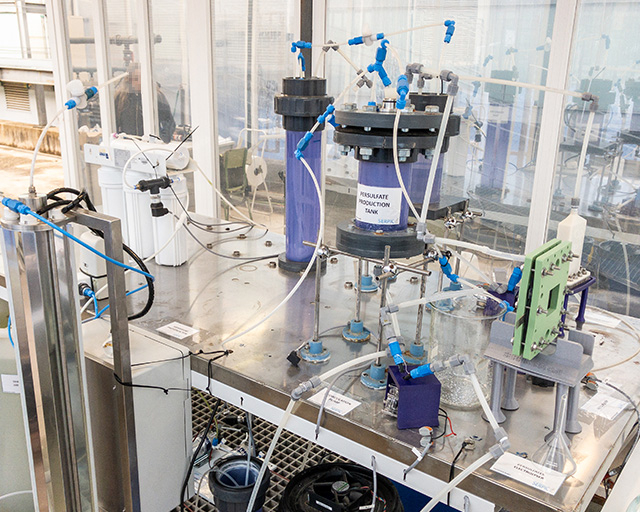A look behind the scenes – The SERPIC project

Efficient purification of effluent from wastewater treatment plants in order to enable its reuse in crop irrigation - This is the aim of the European research project “Sustainable Electrochemical Reduction of contaminants of emerging concern and Pathogens in WWTP effluent for Irrigation of Crops – SERPIC”. Graduate engineer Dr. Jan Gäbler from the Fraunhofer Institute for Surface Engineering and Thin Films IST tells us exactly what the project is all about and what makes the work so exciting.
Dear Jan, what exactly is the SERPIC project about and who is involved in it?
In the SERPIC project, we are working in collaboration with our partners on the development of an additional purification stage for wastewater treatment plants that consists of several sub-components. The aim is to reduce the concentration of pollutants that are not removed during the usual purification stages. These are organic micropollutants, such as pharmaceutical residues or pesticides, as well as bacteria that are resistant to antibiotics. A large proportion of the water purified in this way is to be re-used for irrigation in agriculture. In addition to the overall coordination of the project, the Fraunhofer IST is significantly involved in the simulation and design of the electrochemical cells which form one of the sub-components. Furthermore, we are responsible for the production and provision of the diamond electrodes utilized in the cells, which are necessary for the electrochemical processes.
Flow simulation of the diamond electrode cell for the persulphate production.
The SERPIC project started on 1st September 2021 and will run until 31st August 2024. How did the project come about? What have you already achieved and what would you like to additionally achieve?
We had already become acquainted with some of the partners through the earlier SafeWaterAfrica research project. SERPIC is comprised of a total of eight partners from Europe and South Africa, who applied for the “AquaticPollutants” call from six national funding bodies. In Ciudad Real in Spain, we have built a prototype plant using the sub-components developed by the individual partners. With this plant, we have been able to successfully reduce the targeted micropollutants in the water to the desired level and to use it to irrigate carrots and potatoes in a field test.
What significance does the project have for the Fraunhofer IST?
The SERPIC project is very important for the Fraunhofer IST, as it offers an opportunity to open up a new field of application for the water-treatment technology that we have developed using diamond electrodes. We see enormous potential for the application of this technology in plant cultivation, which we will continue to test in our own research greenhouse. Our focus here lies on the further development of diamond electrodes and cells in order to further enhance the efficiency of electrochemical processes, in particular to reduce pollutants in very low concentrations.
What role do you play in the project yourself and what do you personally find exciting about your work in the team?
I coordinate the work of the two participating Fraunhofer institutes IST and ISE, and I am the overall project coordinator. This means that I ensure that all the work within the consortium is progressing well and that we achieve our objectives to the best of our ability. I am inspired by the high level of commitment shown by the whole team, which has led to the successes we have already achieved. I really enjoy the coordination work and I am delighted with the friendly relationships with all the partners in Germany and abroad that have developed throughout the long duration of the project.
What do you hope for once the project has come to an end?
I am working hard to continue the collaboration on the topic. I hope that the SERPIC technology will be further developed following the conclusion of the project. My goal is that in a few years’ time, the technology could become a solution for providing safe water from wastewater treatment plant effluent for irrigation in arid regions, thereby helping to secure our food supply even in times of climate change.
Last modified:

